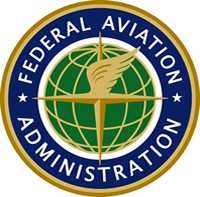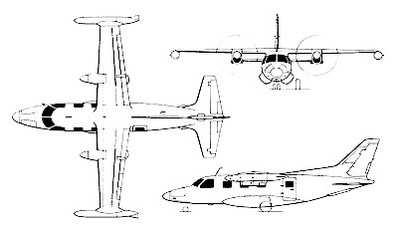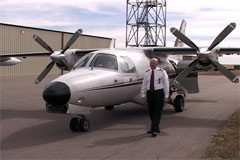Requirements Fall Short Of Type Rating
 After receiving
numerous comments from both private and commercial operators of the
Mitsubishi MU-2B turboprop -- as well as owner representatives, and
the plane's manufacturer -- the FAA intends to go forward with its
call for a Special Federal Aviation Regulation (SFAR) calling for
new pilot training, experience, and operating requirements for the
speedy aircraft.
After receiving
numerous comments from both private and commercial operators of the
Mitsubishi MU-2B turboprop -- as well as owner representatives, and
the plane's manufacturer -- the FAA intends to go forward with its
call for a Special Federal Aviation Regulation (SFAR) calling for
new pilot training, experience, and operating requirements for the
speedy aircraft.
The final rule mandates a comprehensive standardized pilot
training program for the MU-2B. The regulation requires use of a
standardized cockpit checklist and the latest revision of the
Airplane Flight Manual. MU-2B operators also must have a working
autopilot onboard except in certain limited circumstances. Owners
and operators must comply with the SFAR within a year.
The FAA's requirements follow an increased accident and incident
rate in the MU-2B over the past four years, and are based on a
safety evaluation of the MU-2B conducted by the agency since July
2005. This SFAR mandates additional training, experience, and
operating requirements to improve the level of operational safety
for the MU-2B.
"The FAA studies enormous amounts of data looking for trends,"
said FAA Associate Administrator for Aviation Safety Nick Sabatini.
"When we saw the rising accident rate for the MU-2B, we decided to
take appropriate actions to bring the plane up to an acceptable
level of safety."
In its original Notice of Proposed Rulemaking, the FAA proposed
new requirements for ground and flight training that would apply to
all persons who manipulate the controls or act as pilot-in-command
(PIC) of the MU-2B. The proposed SFAR also would apply to those
persons who provide pilot training for the Mitsubishi MU-2B.
Operational requirements -- including a requirement for a
functioning autopilot for single pilot instrument flight rules
(IFR) and night visual flight rules (VFR) operations, a requirement
to obtain and carry a copy of the latest available revision of the
airplane flight manual, and a requirement to use a new pilot
checklist were part of the proposal -- where included in the NPRM,
building on the current MU-2 requirements as spelled out in 14 CFR
parts 61, 91, and 135.

The FAA proposed that all training conducted in the Mitsubishi
MU-2B be done using the standardized Mitsubishi Heavy Industries
training program and a checklist accepted by the FAA's MU-2B FSB.
The requirements called for by the FAA fall short of a type-rating
standard, which some have called for the MU-2 to have due to its
unique operational characteristics compared to other multi-engine
turboprops.
The FAA notes over 90 comments on the proposed SFAR were
received -- and, generally, those weighing in on the proposed rule
agreed with the FAA's assertion the MU-2B is a safe
aircraft, if "flown by the book."
 Some took issue with
the FAA's call for an increase to the total number of program hours
required for pilot training, or qualification as a flight
instructor; others noted pilot proficiency should be the standard
of judgment, not a set number of hours. The agency notes its
hours-requirement should be considered a minimum standard, not the
set limit.
Some took issue with
the FAA's call for an increase to the total number of program hours
required for pilot training, or qualification as a flight
instructor; others noted pilot proficiency should be the standard
of judgment, not a set number of hours. The agency notes its
hours-requirement should be considered a minimum standard, not the
set limit.
Commenters were split on whether the SFAR would actually result
in a drop in the number of MU-2B accidents. Several noted the
majority of MU-2B accidents stem from lack of adequate pilot
training (especially, it should be noted, in regards to the
airplane's behavior in slow flight, and one-engine-out operations
-- Ed.) while others felt the rule would do
little to address accidents caused by poor pilot judgment -- an
issue hardly unique to flying the MU-2.
The FAA originally called for a 180-day timeframe for operators
to implement the new standards -- a schedule many felt was too
short. The agency has since revised its compliance period to one
year.
The Full, 216-page report -- including proposed graphics to aid
pilots in emergency situations -- is available at the FMI link
below.
 ANN's Daily Aero-Term (12.19.25): Ultrahigh Frequency (UHF)
ANN's Daily Aero-Term (12.19.25): Ultrahigh Frequency (UHF) NTSB Prelim: Cirrus Design Corp SR22T
NTSB Prelim: Cirrus Design Corp SR22T Classic Aero-TV: The Red Tail Project--Carrying the Torch of the Tuskegee Airmen
Classic Aero-TV: The Red Tail Project--Carrying the Torch of the Tuskegee Airmen Aero-News: Quote of the Day (12.19.25)
Aero-News: Quote of the Day (12.19.25) Airborne 12.17.25: Skydiver Hooks Tail, Cooper Rotax Mount, NTSB v NDAA
Airborne 12.17.25: Skydiver Hooks Tail, Cooper Rotax Mount, NTSB v NDAA





